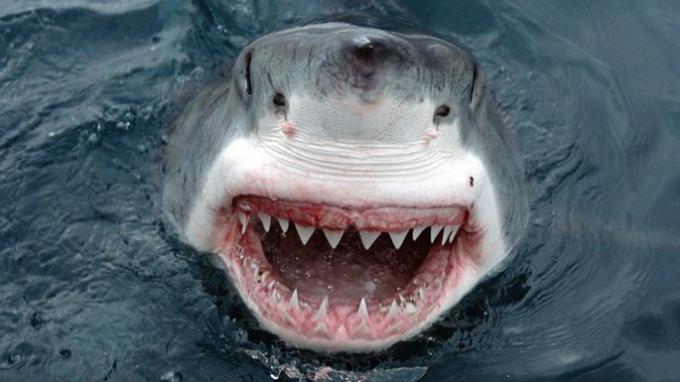The Great White Shark (Carcharodon carcharias, scientific name) is one of the largest species found today and the largest among predatory sharks. He is at the top of the ocean chain.
The species is impressive for its size, reaching up to 7 meters in length and weighing around 2.5 tons.
It is commonly found in coastal regions around the world, especially in temperate waters. Despite being relatively harmless to humans, the white shark has gained movie fame and is one of the most feared animals in the world.
Great White Shark Characteristics
O carcharodon carcharias, scientific name of the white shark, it is one of the largest species of fish on the planet. Its length and average weight is 5 meters and 1.5 tons, respectively. In the species, females are larger than males.
Sharks are cartilaginous fish, their scales are not the same as common fish, they are called dermal denticles. These micro-scales give a smooth appearance to the skin of sharks and rays.

White sharks have a white inferior cartilage (belly), which gives them their name. However, its back is gray or bluish in color.
Unlike other fish species, white sharks do not have a swim bladder, which forces them to be in constant motion so as not to sink into the sea.
Despite the difficult tracking of individuals of the species, scientists estimate that white sharks can live up to 70 years.
Great White Shark Classification
| Kingdom | Phylum | Class | Order | Family | Gender | Species |
|---|---|---|---|---|---|---|
| animalia | Chordata | Chondrichthyes | laminforms | Lamnidae | Carcharodon | Ç. carcharias |
Great White Shark Eating Habits
They usually feed on other marine animals, placing them at the top of the food chain. Attacks on humans are uncommon and are often signs of some environmental imbalance.
Adult white sharks tend to feed on mammals such as seals and sea lions, and they also feed on the remains of dead whales, even in a state of decomposition.
A curiosity about the great white shark is its particular way of hunting. Unlike other shark species, which surround their prey waiting for the best time to attack, white sharks attack their prey vertically, from the bottom up.

Great White Shark Attacks
Despite being very aggressive, strong and frightening animals, white sharks are not the species that pose the most risks to human beings.
Studies show that, throughout history, cases of great white shark attacks on people have been rare. Other species, such as the tiger shark, have more occurrences.
Sharks are almost harmless compared to animals such as mosquitoes, bees or hippos that kill hundreds of people each year.
Part of his fame as a human hunter comes mainly from movie theaters, as in the movies of the series "Jaws" (Jaws), by Steven Spielberg.
In the movies, white sharks bring panic to bathers and fishermen on the American coast. Along, of course, with the music composed by John Williams for the film, which fulfilled the function of increasing the suspense and fear of sharks.
Interested? Read too:
- Biggest Predators in the Animal Kingdom
- Food chain
- Fish
- Commensalism
Bibliographic references
KLIMLEY, A. Peter; AINLEY, David G. (ed.). Great white sharks: the biology of Carcharodon carcharias. Academic Press, 1998.


